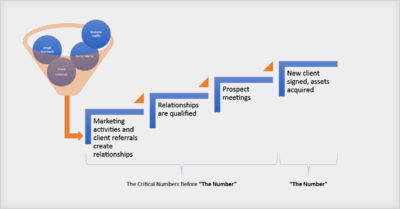How do you get your marketing programs off the ground? Where should you be spending your time and resources? What is going to work and what is not going to work?
I was on the way back from a business trip a couple months ago and I was reading an article in WealthManagement.com on the importance of continually testing and measuring your marketing assumptions. I was all pumped up after spending the weekend at the Fairmont in Scottsdale talking about marketing with some of the top RIAs in the country. Reading the article, it hit me that the lessons are universal principles that all managers should integrate into their marketing efforts.
Create a pilot program and execute
Stop overthinking it and do it. Sounds easier than it is and if you’ve ever been tasked with launching a new marketing program you know what I mean. Before you can execute, you need to have a concise roadmap with dates, activities and responsible parties. The more complex this becomes, the more difficult it is to get your program off the ground. That’s where pilot programs come in because they are micro-campaigns that are easier to organize, fund, staff, and track. This works for social media, email newsletters, marketing automation, display advertising, blogging, podcasting, video and a lot more.
Increase marketing capacity and learn for your execution
According to the Wealth Management article, the most successful firms are the ones testing new strategies and tactics with the goal of picking winners and losers as quickly as possible. From my work in education, health care, finance, supply chain, and technology, I believe this is true for all business categories. The leaders know how to quickly expand activities that they have proven to work because they have the experience and data to justify the increased investment of resources. On the other hand, they minimize their risk of wasted time and resources by quickly abandoning activities that have shown little or no results. The trick is to know whether or not a particular activity has enough data to determine if it is a winner or loser.
The Best Marketing is flexible
As you execute you will learn and adjust to improve your efficiency to create, distribute and track your content. Once you start to gain confidence with the format and cadence of your program, you will find that your capacity to create great content will improve. To get started you must make some assumptions and act on them. The moment you learn that your original assumptions are not effective, take what you’ve learned from execution, adjust and keep moving. It should not be seen as a failure but rather as part of the process.
Pick Something Small
Regardless of your industry, your success is tied to your ability to effectively connect and engage with an audience via a variety of different communication channels online and offline. Don’t let the size of this task overwhelm you and keep you from starting. Write down one thing you want your marketing to do that it is not currently doing. Keep it simple. If email marketing is on your list, don’t get bogged down with all the different audiences you serve. Pick one and write down the 5 to 6 steps to create the content, distribute it and then track it once a month. Do this for 90 days and then evaluate the program.
If you would like to share your ideas with me I would be happy to answer some questions or provide feedback if it will help. Please sign up to receive my newsletter by clicking here.










